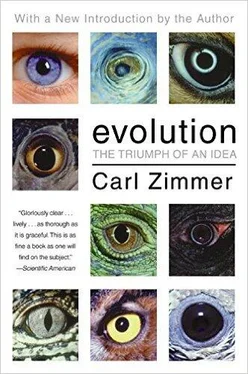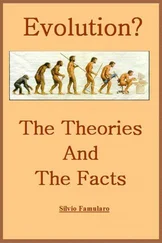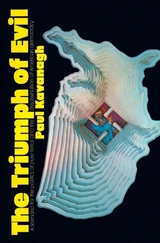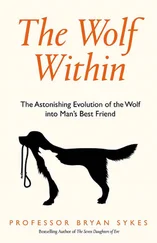The Russian army fell farther back, burning the croplands as they retreated. Without food, the French forces grew weak, and the typhus epidemic gained more force. Napoleon left behind his dying soldiers in makeshift hospitals and marched on. When he finally reached Moscow, the city had been emptied out and the Russians then proceeded to burn down two-thirds of it. Napoleon realized he had to get out of Russia before winter came or his entire army would perish.
The army retreated along the same route that they had taken into Russia, surviving on horse meat and melted snow. At the hospitals they had set up on their way east, dead bodies were strewn in the corridors. The army had no choice but to leave behind more of its sick, and soon they died as well. Moving west across Poland and Prussia, the army fell apart into small bands of soldiers that straggled back on their own. They became human lice, triggering new epidemics of typhus in the villages they passed through. “Wherever we went,” one French soldier wrote, “the inhabitants were filled with terror and refused to quarter the soldiers.” Only 30,000 soldiers returned home. Nineteen out of every twenty men who had left for Russia had died. Napoleon never recovered from the losses that Rickettsia inflicted on him, and his empire soon crumbled.
It now turns out that Napoleon’s dying soldiers carried within their cells the closest known relatives to the bacteria that killed them.
At some point in the distant past, a long-lost oxygen-breathing bacterium gave rise to the ancestors of both Rickettsia and mitochondria. Both lineages were originally free-living microbes, feeding on the nutrients that surrounded them. Eventually each lineage began to live inside other organisms. Rickettsia evolved into a ruthless parasite that could plunge into its hosts and ravage them. But the bacteria that invaded our ancestors ended up in a kinder relationship. Miklos Müller of Rockefeller University has suggested that protomitochondria may have hung around early eukaryotes to feed on their wastes, and the eukaryotes—which could not use oxygen for their metabolism—came to rely in turn on the wastes of the oxygen-breathing protomitochondria. Eventually the two species merged and the exchanges between them began to take place within a single cell.
Evolution by fusion was not part of the modern synthesis. It is a way to change a species without gradually accumulating mutations to its DNA: just meld two species into one, and suddenly create a new genome. But symbiotic evolution, as strange as it may seem, still follows Darwin’s basic rules. Once bacteria get settled in their new host, natural selection continues to shape their genes. Mitochondrial DNA can mutate, and if a mutation interferes with the job of creating energy for a cell, it can be weeded out by natural selection. On the other hand, if a mutation helps mitochondria do their job better and raises an organism’s fitness, natural selection can spread that gene instead. Mitochondria have also lost many of the genes that their free-living ancestors used to survive in the outside world. These genes proved to be an unnecessary burden once mitochondria could rely on their hosts to handle those chores. Eventually evolution stripped the superfluous genes away.
For the first 3 billion years or so of life’s history, microbes were the sole inhabitants of Earth. These were not eons of evolutionary ennui, no matter what we may anthropocentrically assume. Biochemically speaking, the age of microbes was a time of remarkable change—a global flux of genes that invented countless ways of turning energy into life. It was only after microbes had gone through all of this evolution that our own multicellular ancestors—the first animals—could appear.
Six
The Accidental Tool Kit
Change and Constraints in Animal Evolution
Of all the differences between ourselves and our amoeba-like ancestors a billion years ago, one is paramount: we have bodies. Instead of a single cell, we are made of trillions. This vast collective isn’t just a bag of identical copies, but a menagerie of dozens of types of cells, organized into hundreds of body parts from spleens to eyelashes to skeletons to brains. And most remarkable of all, each of our bodies is built out of a single original cell. As that cell multiplies into an embryo, genes begin producing proteins that control its development. Some of the proteins switch on other genes or shut them down; some leave the cell where they were made and spread away, to act as signals to neighboring cells, which respond by taking on new identities, or by crawling through the embryo to find a new home. Some divide madly, while others commit suicide. And when this dance is over, our bodies have taken shape.
There are millions of other kinds of bodies on Earth, from tentacled squids to quilled porcupines to mouthless tapeworms. They are marvels to behold; their origins are a grand challenge to comprehend. All animals descend from a common single-celled ancestor, but scientists are still learning how it was that they diversified into so many different bodies. The answer lies both within animals and outside them, in their genetic history and the ecology in which they lived.
Scientists have only just begun exposing the ways that genes build animals, but their results have already proved to be revolutionary. Most animals, including us, use a standard tool kit of body-building genes. It contains tools for marking off the coordinates of an animal’s body—front and back, left and right, head and tail. It also contains a set of genes that control the development of entire organs such as eyes and limbs. The tool kit is remarkably unchanged from one species to another—a gene that controls the growth of eyes in a mouse can be donated to a fly and build its eye instead.
Judging from the fossil record, this tool kit must have gradually evolved in the millions of years that preceded the Cambrian explosion. It gave animals an extraordinary flexibility for evolving new forms. Simply by making a few changes—altering the timing of a gene’s activity, for example, or the places where it became active—the tool kit could produce dramatically new body plans. On the other hand, as diverse as animals have become, they have obeyed certain rules. There are no six-eyed fish or seven-legged horses. It appears that the tool kit shuts down certain paths of evolution.
The diversification of animals has also been controlled by the environment in which animals evolve. Any new kind of animal has to find a place in its ecosystem where it can survive. Otherwise it simply disappears. The fate of any new kind of animal is far from predictable, often depending on random strokes of luck and accidental fortune. Consider vertebrates that live on land. They all have four limbs with digits (or, in the case of snakes, descend from ones that did). But that doesn’t mean that this design evolved simply because it was the best possible way to walk on land. In fact, legs and toes evolved on fish millions of years before they left the water. Only later did they turn out to allow vertebrates to move on dry land. The great transformations that animals have gone through all contain the same lesson: evolution can only tinker with what the history of life has already created.
Evolution’s Monsters
To learn how animals evolve, biologists make monsters. They create flies with legs sprouting from their heads. They cover their bodies with eyes. They put extra toes on a mouse or a spinal cord in a frog’s belly.
Biologists need no surgery to construct these monsters. In each case, all they have to do is alter a single gene, either by shutting it down or by changing the time or place where it makes its protein. These genes, biologists have discovered, control the development of animal bodies.
Читать дальше












